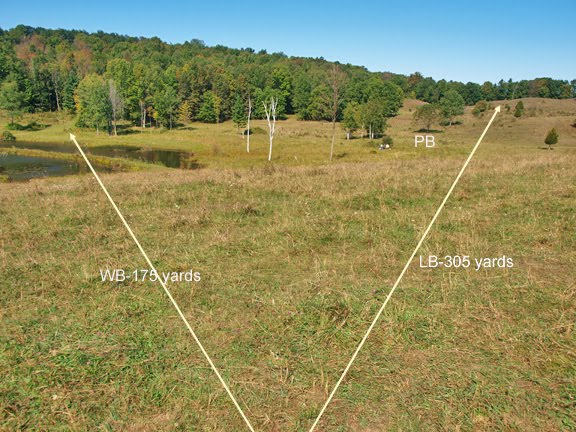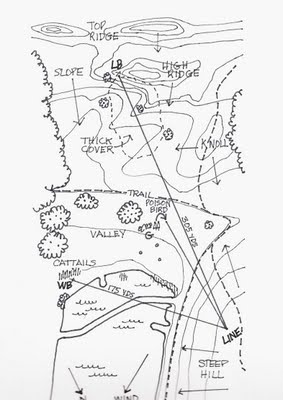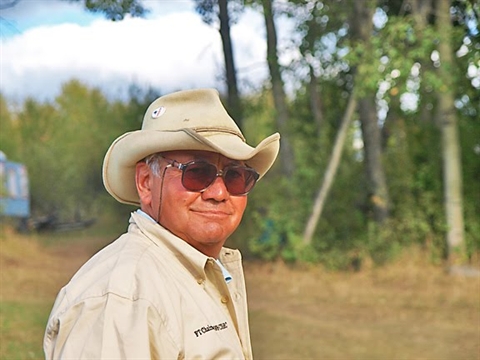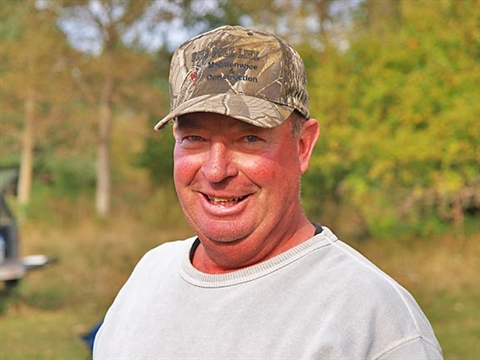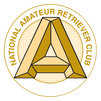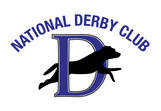Wednesday, September 16, 2009 |
Test 4 and 5
We awoke to the coolest morning yet with a northerly breeze and light cloud cover. By 7:30am, the gallery was gathered on a high hill over-looking a pond and large pasture hills with scattered bushes, trees and lots of little ups and downs. The judges had set up combined Test 3 and 4-water and land blinds with a poison bird. Two gunners were placed at 135 yards in the valley. They threw a poison bird. After the judges gave the handler a number, the Water blind was picked up first and then the Land Blind. The water blind (175 yards) to the left of the gunners was an entry down a hill into a corner of the pond. The line angled across an isthmus and angled back in just past a small point for an angle exit and on shore for about 10 yards to a hen duck. The land blind (305 yards) was to the right of the poison bird, down into the valley and then up the hill. As the dog climbed the hill, trees on each side and various rolls created hazard. It was easy to loose a dog to the right or left of the key-hole. handlers were allowed to move forwards about 35 yards after their dog crested the hill in front. The poison bird was not picked up. The wind was angling in from the NE making it a cross-wind for the water blind and almost at the line for the land blind. It was steady at about 10 mph which made it cool in the shade where the handlers were at the start.
The first test dog, Diva, handled by Gerry Burmaster, had trouble on the water blind, being influenced by the poison bird. Her land blind showed how easily a dog could disappear. The second test dog, Hon:sti, handled by Jim Green had controlled blinds on both land and water but showed that at the end of the land blind, it was easy to get into trouble. There were a few early delays as vehicles got relocated. The first dog, #35 started and showed that the water blind could cause problems. Handlers went to school quickly and didn’t gamble on the land blind. Most dogs needed at least 4-7 whistles on each blind. A few did get in trouble and unfortunately by noon after almost 30 dogs had run, there were two pick-ups, # 51 and # 61. We should be done by late afternoon. I’ll report if the test changes. The wind is picking up a bit now which may cause more problems.
The first test dog, Diva, handled by Gerry Burmaster, had trouble on the water blind, being influenced by the poison bird. Her land blind showed how easily a dog could disappear. The second test dog, Hon:sti, handled by Jim Green had controlled blinds on both land and water but showed that at the end of the land blind, it was easy to get into trouble. There were a few early delays as vehicles got relocated. The first dog, #35 started and showed that the water blind could cause problems. Handlers went to school quickly and didn’t gamble on the land blind. Most dogs needed at least 4-7 whistles on each blind. A few did get in trouble and unfortunately by noon after almost 30 dogs had run, there were two pick-ups, # 51 and # 61. We should be done by late afternoon. I’ll report if the test changes. The wind is picking up a bit now which may cause more problems.
2:00 pm. The test has made a turn for the worse over the last hour or so. We’re at dog # 7 now. # 1 picked up the poison bird and #’s2, 5 and 6 have just picked up. Even before that there were several dogs lost to the left but eventually they got the bird. Some are speculating that the backlit handlers are harder to see with the sun now overhead. But even the water blind is causing trouble. Strong winds now appear to be making the dogs “wilder” and less responsive. The luck of the rotation is always a factor at Nationals on all day tests.
3:00 pm The cloud cover has been gradually buiding all day from the clear skies this am. Now for the first time the shadows are disappearing and the handlers might be more visible. We're at dog 13 and the last several have done quite well.
4:30 pm The wind dropped a bit and the sun is off to the side. Work is generally better although the hazard of dragback in the last 1/3 of the land blind persists.
Dog # 34 was the last dog and came to line at 5:10pm. Unfortunately it was a pick-up.
Today's volunteer gunners and blind planters were Mike Prechitko, Al Moroz, John Chevalier, Ann Steer, Medie Robinson, Chris Mason, Shirley Greener, Gerry Burmaster, Paul Lalley, Ted Gadawski, Tim Crone and Pearl McGinn.
Callbacks soon!
3:00 pm The cloud cover has been gradually buiding all day from the clear skies this am. Now for the first time the shadows are disappearing and the handlers might be more visible. We're at dog 13 and the last several have done quite well.
4:30 pm The wind dropped a bit and the sun is off to the side. Work is generally better although the hazard of dragback in the last 1/3 of the land blind persists.
Dog # 34 was the last dog and came to line at 5:10pm. Unfortunately it was a pick-up.
Today's volunteer gunners and blind planters were Mike Prechitko, Al Moroz, John Chevalier, Ann Steer, Medie Robinson, Chris Mason, Shirley Greener, Gerry Burmaster, Paul Lalley, Ted Gadawski, Tim Crone and Pearl McGinn.
Callbacks soon!
Callbacks Just In! We are down to 50 dogs.
The following dogs were dropped:
1, 2, 4, 5, 6, 14, 21, 24, 34, 51, 60, 61, 68, 69, 74
posted by Canadian National Blog Team @ 11:30 AM
The following dogs were dropped:
1, 2, 4, 5, 6, 14, 21, 24, 34, 51, 60, 61, 68, 69, 74
posted by Canadian National Blog Team @ 11:30 AM



